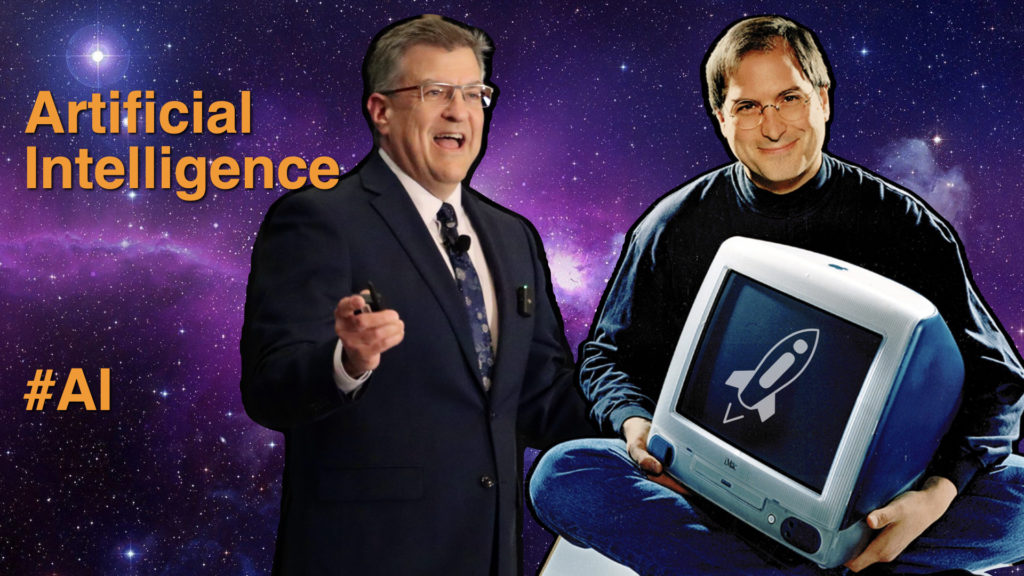When I was a child, I dreamed of being an astronaut. Space exploration fascinated me, and I vividly remember watching live video of astronauts walking on the moon on our black and white television, looking up at my dad and telling him that when I grow to be his age, I too would walk on the moon. While that didn’t happen, my fascination with technology exploded after my dad brought home the first scientific calculator from his work at RCA’s David Sarnoff Research Center.
The First Encounter with Technology
My dad was very cautious with this device, the HP-35, a marvel of its time costing a whopping $395 (equivalent to about $2,800 today.) He allowed us to use it but only with one hand behind our back and with only one finger to press the buttons. I remember entering 7 x 7 and seeing the answer, 49, appear on the screen. It was magical – how can it do what only humans can do? I then tried more complex calculations and marveled at how this machine could compute answers that I didn’t know myself. My dad explained that these circuits were tiny wires that could process math, but even he didn’t fully understand how it worked. This mystery of “Wires that Think” intrigued me, and my early encounter with technology sparked my curiosity and set me on a path I hadn’t anticipated. My dad told me that it was because of devices like this calculator that humans were able to travel to the Moon. I was hooked.
The Shift to Computers
As technology advanced, my dad brought home another fascinating piece of space-age tech: a microcomputer kit from RCA, called the COSMAC VIP. I taught myself how to solder it together and program it, further deepening my interest in computers. My neighbor had a TRS-80, a more powerful computer, and he programmed it to learn how to win at tic-tac-toe, making it harder to beat each time. This early form of AI captivated me, making me realize that computers could learn and evolve.
The Personal Computer Revolution
My career in technology provided me with the privilege of working for Steve Jobs, who shared his vision of making computers accessible to everyone. He wanted to democratize computing power, moving it out of air-conditioned rooms guarded by the lords of the early computer industry and into the hands of ordinary people.
He believed computers were like a “bicycle for the mind,” amplifying human’s cognitive abilities. Jobs’ metaphor resonated deeply with me. Just as a bicycle amplifies human muscle power, computers were designed to amplify our mental capabilities. This vision has come to fruition as computers have become ubiquitous in our daily lives, from our classrooms and workplaces to our pockets. Today, this vision has evolved, and I believe AI is taking it a step further by becoming a “Rocketship for the Mind,” enabling us to reach new heights of creativity and problem-solving we could never reach alone.
AI: The Next Frontier
Just as the scientific calculator revolutionized math for me as a child, AI is transforming the way we interact with technology today. AI is everywhere, from our smartphones to security systems, making our lives easier and more efficient. The integration of AI in everyday devices is akin to how the calculator simplified complex math, providing us with tools that enhance our capabilities, and taking us places we could never go before. Today, AI is the next frontier, enhancing and expanding the capabilities of traditional computing.
While there are concerns about AI replacing human jobs, it’s essential to recognize that AI, like previous technological advancements, can augment human abilities and open up new possibilities. AI can take on tasks that were once tedious or impossible for humans to handle efficiently. For instance, programming once required me to learn the “machine language” of computers, essentially forcing me to arrange the ones and zeros in just the right order for the computer to understand what I wanted it to do. Now, AI can write complex code and even create games or art simply by asking as I might ask another human. Witness the power of OpenAI ChatGPT 4-o for example. This shift frees people to focus on more creative and strategic endeavors, and to help other humans.
P.S. I asked Perplexity.ai (click this link to see my prompts) to create an unbeatable game of Tic Tac Toe, which you can play on the bottom of this page: https://skytech.io/about/
Conclusion
AI, like all technological advancements before it, is still just a tool to aid humans. As we continue to explore the potential of AI, we should embrace its ability to amplify our minds and take us to places we could never reach alone. AI is indeed a “Rocketship for the Mind”, propelling us to new heights and unlocking possibilities that were once unimaginable. The journey from my childhood fascination with astronauts and calculators to my current work with AI at Alarm.com illustrates the incredible progress we’ve made in technology. As we continue to innovate and integrate AI into our lives, I look forward to the remarkable advancements and opportunities that lie ahead.
Stay tuned for more insights on how AI is shaping our world and the exciting possibilities it holds for the future. Thank you for joining me on this journey. Please feel free to share your thoughts and experiences with AI in the comments below!
